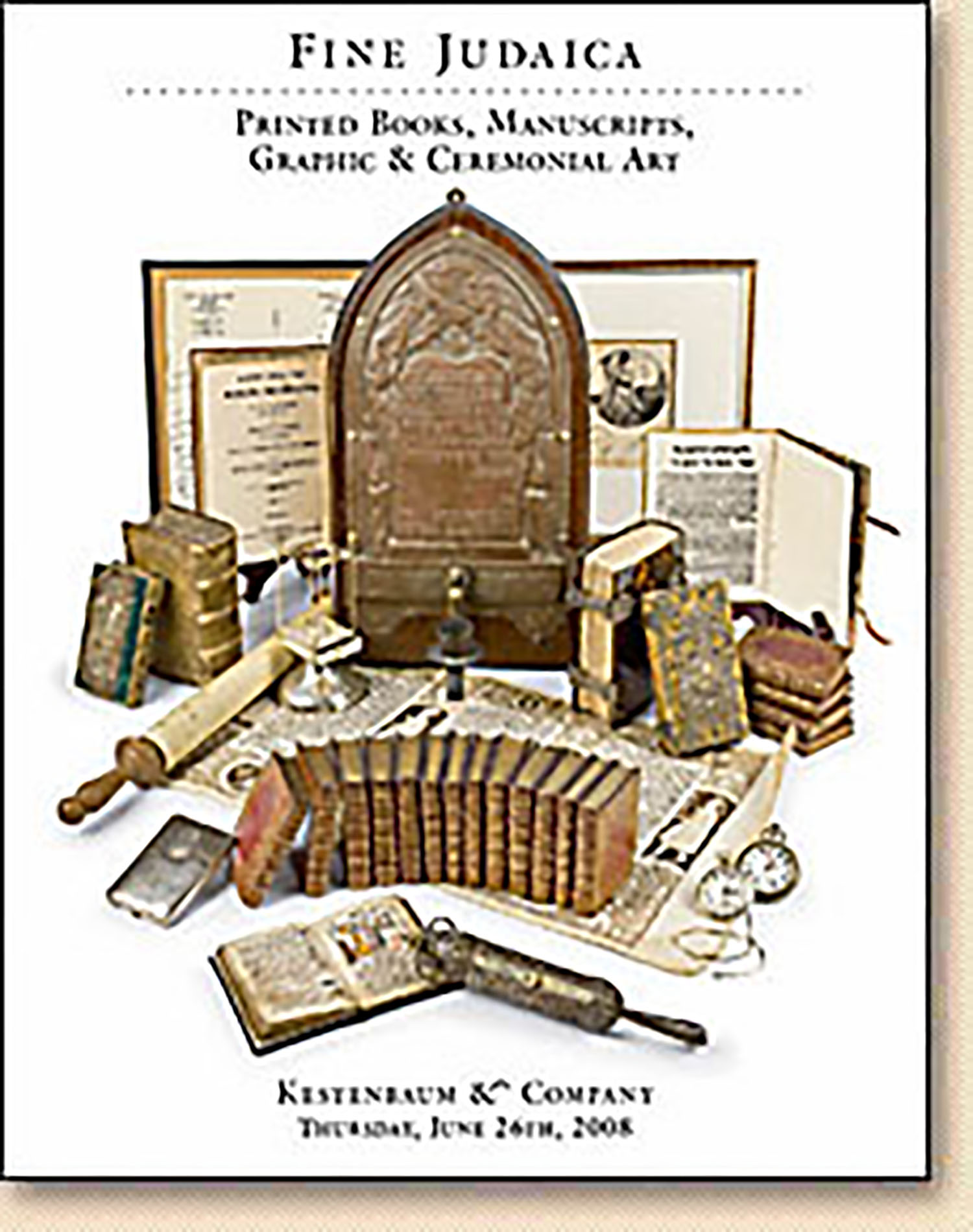Scroll of Ezekiel

AUCTION 40 |
Thursday, June 26th,
2008 at 1:00
Fine Judaica: Printed Books, Manuscripts, Autograph Letters, Graphic & Ceremonial Art
Lot 266
(BAGHDAD).
Scroll of Ezekiel
(Baghdad: 19th-century)
Est: $1,000 - $1,500
PRICE REALIZED $1,600
The Scroll of Ezekiel was employed by Baghdadi Jews on their yearly pilgrimage during the Festival of Shavu'oth (Pentecost) to the traditional Tomb of Ezekiel the Prophet, at el-Kifil, a village twenty miles south of the town of Hillah in central Iraq. Mentioned for the first time in the Epistle of R. Sherira Gaon (c. 986), Ezekiel's Tomb recurs in the travelogues of Benjamin of Tudela (c. 1170) and Pethachiah of Regensburg (about the same time). The tomb consists of a man-made cave covered by a cupola, over which a magnificent outer tomb has been constructed. It is there that pilgrims would pray. In 1860, the Muslims attempted to take control of the tomb away from the Jews, but the Ottoman Government interceded on behalf of the Jews.
The Scroll contains two readings from the Book of Ezekiel: the entire first chapter (the Haphtarah for the first day of Shavu'oth), and Ezekiel 37:1-14 (which happens to be the Haphtarah for Shabbath Chol ha-Mo'ed Pesach). There follows prayers beseeching Ezekiel the Prophet to intercede on behalf of the Jewish People, various Psalms, and Aggadic passages from the Talmud.
It would seem that the use of such a Scroll was much in vogue in the 19th-century - all 43 examples found in the Sassoon collection are from that period. See D.S. Sassoon, Ohel Dawid (1932), p. 558 (no. 360); EJ, Vol. VI, cols. 1096-7. For recent reportage from the Tomb of Ezekiel, see The New York Times, 1st June, 2008 (illus.)
